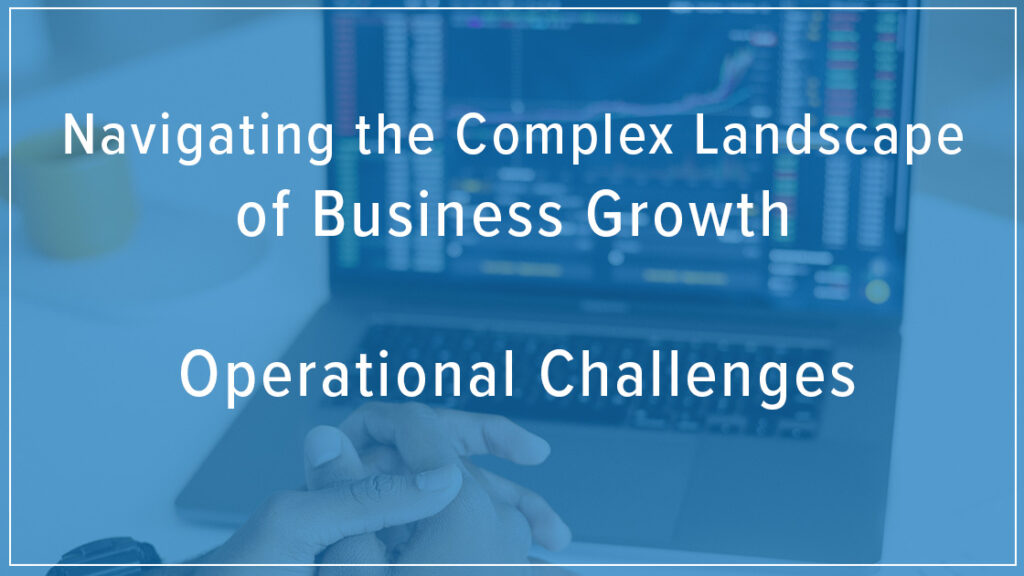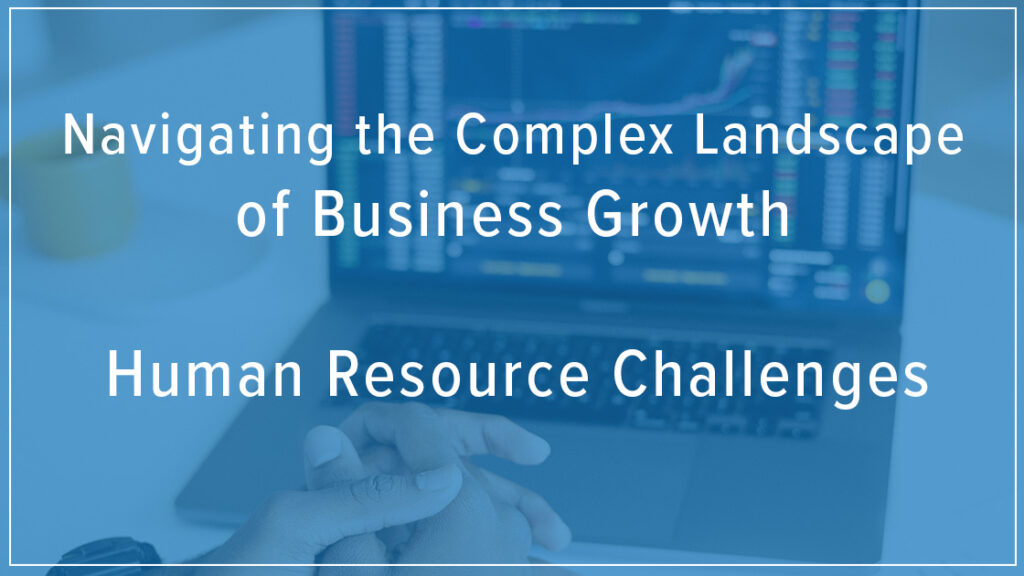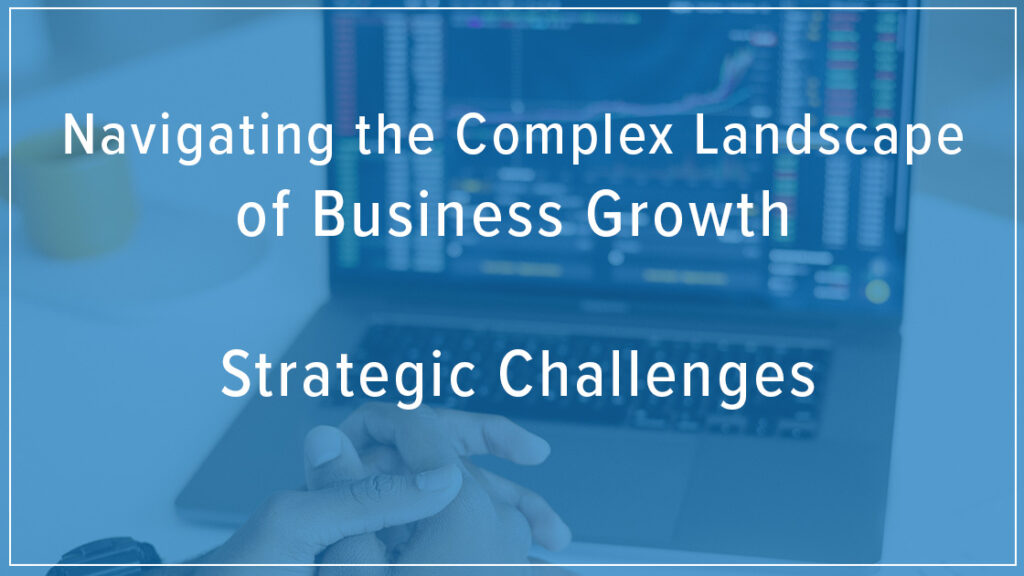Navigating the Complex Landscape of Business Growth
As a CEO, you’re constantly striving to propel your business forward. However, the path to sustainable growth is often paved with challenges that can seem insurmountable. From financial constraints to operational bottlenecks, market fluctuations, human resources hurdles, technological advancements, and strategic missteps, the landscape of business growth is complex and ever-evolving.
At Stellar Insight Inc., we understand the unique challenges you face and are committed to providing you with the guidance and support you need to overcome them. In this blog, we will delve into some of the major obstacles that can hinder business growth and offer actionable strategies to help you navigate them successfully.

Financial Constraints
Financial challenges often loom large over businesses, hindering their ability to expand and thrive. If you want to experience significant business growth, pay special attention to cash flow management, funding acquisition, and profitability. Now we will take a bit closer look at each and provide suggestions on how to improve strategy where needed.
Cash Flow Management
Ensure sufficient funds: Maintain a healthy cash flow to cover operating expenses, invest in growth initiatives, and handle unexpected costs.
Optimize cash flow: Implement strategies to improve cash inflows and reduce outflows, such as streamlining payment processes and negotiating favorable terms with suppliers.
Create a cash flow forecast: Develop a detailed plan to anticipate future cash needs and make informed financial decisions.
Funding Acquisition
Assess financing needs: Determine the amount of capital required to achieve your growth objectives.
Explore funding options: Consider various sources of funding, including loans, equity investments, grants, and government programs.
Evaluate the pros and cons: Carefully weigh the advantages and disadvantages of different financing options, such as interest rates, repayment terms, and dilution of ownership.
Profitability
Analyze revenue and expenses: Regularly review your income statement to identify areas for cost reduction and revenue enhancement.
Set realistic profit margins: Establish achievable profit targets that align with your business goals and industry benchmarks.
Optimize pricing: Evaluate your pricing strategy to ensure that your products or services are priced competitively and profitably.

Operational Challenges
As your business grows, it’s essential to address operational challenges that can hinder efficiency and scalability. Ignoring these challenges or not investing enough resources in them can stunt or prevent business growth. Investing the resources needed however can be the reason a business successfully scales, building revenue, diversity, efficiency, and capabilities.
Scaling Operations
Increase production capacity: Expand facilities, invest in new equipment, or optimize existing processes to meet increased demand.
Hire and retain talent: Attract and retain qualified employees to support your growing business.
Manage resources effectively: Allocate resources efficiently to ensure optimal productivity and avoid bottlenecks.
Supply Chain Management
Build strong relationships: Establish partnerships with reliable suppliers to ensure a consistent and cost-effective supply chain.
Diversify suppliers: Reduce your reliance on a single supplier to mitigate risks and maintain flexibility.
Optimize inventory management: Implement effective inventory control systems to minimize stockouts and excess inventory.
Quality Control
Set high standards: Establish clear quality standards and expectations for your products or services.
Implement quality control measures: Implement quality control processes and procedures to ensure consistency and identify potential issues.
Continuously improve: Regularly review and refine your quality control practices to drive continuous improvement.

Market Challenges
The market landscape is constantly evolving, presenting new challenges and opportunities at every turn. From shifts in consumer preferences to technological advancements and economic fluctuations, businesses must adapt and innovate to stay competitive. Understanding these market challenges is crucial for CEOs who seek to navigate the complexities of business growth and ensure long-term success.
Competition
Differentiate your business: Identify your unique selling points and position your business to stand out from competitors.
Gain market share: Develop effective marketing strategies to attract new customers and retain existing ones.
Monitor competitors: Stay informed about your competitors’ activities and adapt your strategies accordingly.
Changing Market Dynamics
Understand customer preferences: Keep up with evolving customer needs and preferences to tailor your offerings.
Embrace technological advancements: Leverage technology to improve your products, services, and operations.
Stay ahead of industry trends: Stay informed about industry trends and anticipate future developments.
Economic Uncertainty
Develop contingency plans: Prepare for potential economic downturns by creating contingency plans to mitigate risks.
Diversify revenue streams: Explore multiple revenue sources to reduce your reliance on any single market or product.
Cost-cutting measures: Implement cost-saving strategies to maintain profitability during economic fluctuations.

Human Resource Challenges
Human resources play a vital role in the success of any business. However, managing your workforce can present significant challenges as your company grows. From talent acquisition and retention to leadership development, HR issues can impact productivity, morale, and overall business performance.
Talent Acquisition
Finding qualified employees: Identify the skills and experience needed to support your growth and attract top talent.
Effective recruiting strategies: Utilize a variety of channels, including job boards, social media, and employee referrals, to reach potential candidates.
Competitive compensation and benefits: Offer competitive salaries, benefits packages, and opportunities for professional development to attract and retain top talent.
Employee Retention
Create a positive work environment: Foster a supportive and inclusive culture that values employee well-being and engagement.
Provide opportunities for growth and development: Offer training and development programs to help employees advance their careers.
Recognize and reward performance: Acknowledge and reward employees for their contributions to the company’s success.
Leadership Development
Identify potential leaders: Identify employees with leadership potential and provide them with opportunities to develop their skills.
Offer leadership training and development: Provide training programs to equip leaders with the necessary skills to guide the business through growth stages.
Create a culture of mentorship: Foster a culture of mentorship and support to help develop future leaders within the organization.

Strategic Challenges
Strategic planning is essential for sustainable business growth. It provides a roadmap for achieving long-term goals, ensuring that resources are allocated effectively, and enabling businesses to adapt to changing market conditions. However, developing and executing a successful growth strategy can be challenging due to factors such as uncertainty, competition, and internal limitations. To overcome these challenges, businesses must conduct thorough market research, analyze their strengths and weaknesses, and create a flexible and adaptable plan that can be adjusted as needed.
Vision and Planning
Develop a clear vision: Define your long-term goals and create a roadmap for achieving them.
Align resources: Allocate resources effectively to support your growth strategy.
Regularly review and adjust: Continuously monitor your progress and make necessary adjustments to your plan.
Risk Management
Identify potential risks: Assess the risks that could impact your business growth.
Develop mitigation strategies: Create plans to address potential risks and minimize their impact.
Monitor and adapt: Continuously monitor the risk landscape and adjust your mitigation strategies as needed.
Innovation
Foster a culture of innovation: Encourage creativity and experimentation within your organization.
Invest in research and development: Allocate resources to develop new products, services, or technologies.
Stay ahead of trends: Keep up with industry trends and anticipate future customer needs.
Navigating The Business Growth Landscape with CEO Coaching
Navigating the complex landscape of business growth requires a multifaceted approach to address the challenges that arise in areas such as finance, operations, marketing, human resources, technology, and strategy. By understanding and proactively addressing these challenges, you can position your business for sustainable growth and long-term success.
At Stellar Insight Inc., our experienced CEO coaches are dedicated to helping you overcome these challenges and achieve your business goals. We offer personalized guidance, strategic advice, and practical tools to empower you to navigate the complexities of business growth with confidence.
Whether you’re facing financial constraints, operational bottlenecks, market challenges, human resource issues, technological advancements, or strategic dilemmas, our coaches can provide the support and expertise you need. Contact us today to schedule a consultation and learn how Stellar Insight Inc. can help you unlock your business’s full potential.